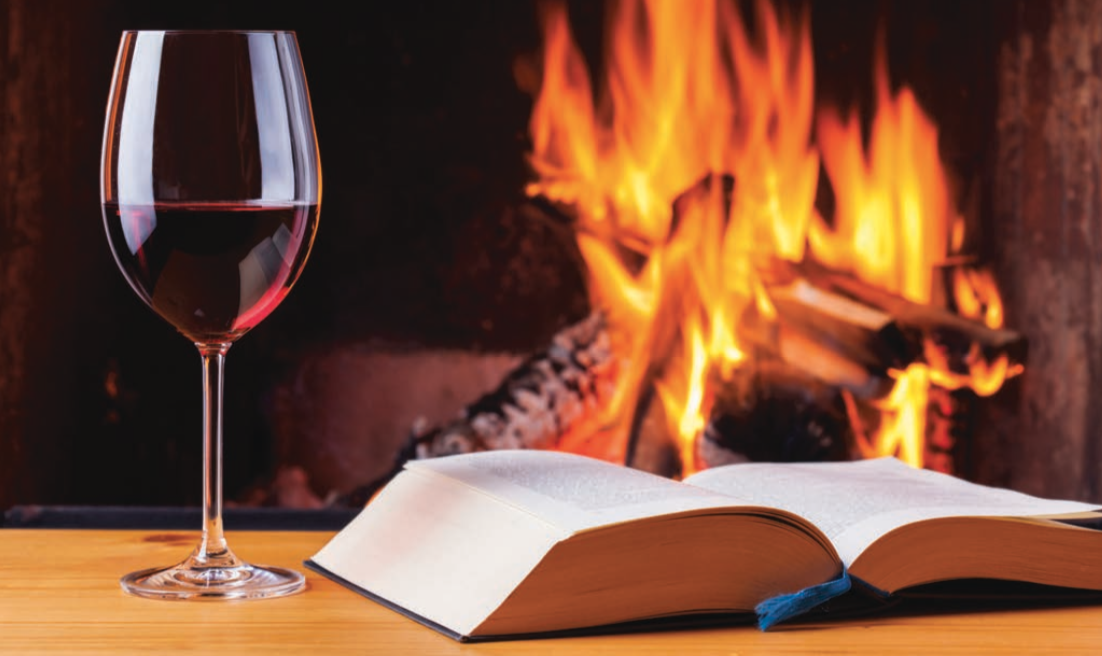With the holidays in the rearview mirror and our sights set on the not-so-distant spring, we button down for the dead of winter. A nice glass of soul-warming red wine by the fire on a frigid day is not a bad way to go. Frankly, I’d rather take a cattle prod to the eye than go out into the bitter cold to “enjoy” winter. A good book and no real agenda other than checking the pot on the stove every now and then is my recipe for a cold snowy Sunday.
But, what’s a nice glass of red? For me, it’s not a tannic super dry wine that needs a steak for accompaniment and goes down like a bag of hammers, and it’s not a light see-through red with no backbone either. I want something warming, velvety and easy to enjoy. A wine that makes me think about it with each sip but at the same time isn’t too cerebral. What I want is Grenache.
People don’t often speak of Grenache when they talk about their favorite wines. That’s most likely I think, because it is typically blended with other grapes and not too often found on its own, at least by its varietal name. But Grenache leads the way in world renowned wines like Châteauneuf du Pape, Côtes du Rhône, some Spanish Rioja (will say Garnacha on label) which is easy to love, not to mention the stunning wines of the Priorat region of Spain. On the island of Sardinia, which some believe to be the origin of the grape, Grenache is known by the local name of Cannonau. Yet, it sometimes feels as though this grape has been banished to the “Island of misfit toys” when compared to other more famous Italian wines since it is rarely found elsewhere in Italy, but Cannonau is a wonderful and inexpensive way to enjoy Grenache.
If you drink Côtes du Rhône, you are enjoying a wine that is often 60-70 percent Grenache. You may not even be aware of this fact as a Côtes du Rhône red can legally contain up to 21 different grapes including some white varietals (!) This may seem sillier than a bald man with a ponytail when you consider that the wines are usually made mostly from just Grenache, Syrah and Mourvedre, but I digress.
There are four quality levels of wine from the southern Rhone Valley: Côtes du Rhône is the lowest and by far the most abundant. Then there is Côtes du Rhône Villages followed by Côtes du Rhône “named” villages (e.g., Cairanne). Finally, there is the “Cru du Rhône” — the highest quality wines, all with a high percentage of Grenache.
Châteauneuf du Pape reds are arguably one of the world’s greatest red wines and are a “Cru du Rhône” along with eight others in the southern Rhône and an additional eight in the north (no Grenache used in northern Rhônes) for a total of 17 different Cru du Rhône wines. My two other favorite southern Rhône Cru’s are called Gigondas and Vacqueyras, which typically feature similar blends as Châteauneuf du Pape but are usually much less expensive. Think of them as “Baby Châ- teauneuf du Pape.” Consider Gigondas the big sister of Vacqueyras and Châteauneuf du Pape the Queen. They are all elegant, voluptuous beauties with a dark and brooding side and a tendency to put the more masculine red wines in their place.
So if you’re looking for some new reds, I would suggest trying some of these “wines by any other name.” Wines made from Grenache are both enjoyable on their own and very food friendly. A nice warming red is also a good stress reliever. Have a sweet tooth? Stressed spelled backwards is “desserts.” Need I say more?
Salute!
By Gordon Heins, Wine Expert for New Hampshire Liquor Commission
From Celebrate Magazine.
